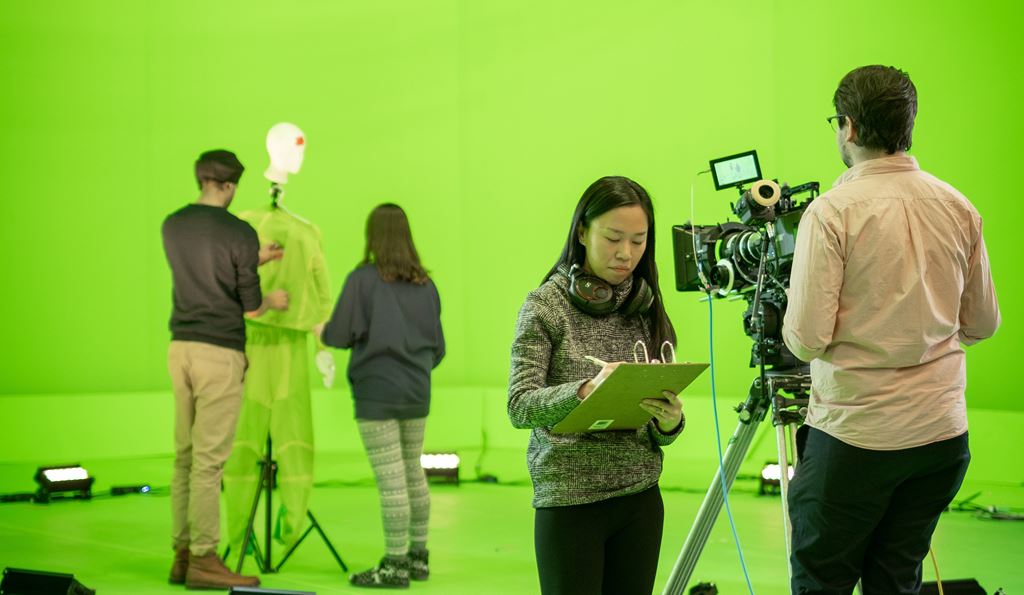
Students help the screen industries remain cutting edge
 by Carolina Salcedo – Jun 4, 2015
by Carolina Salcedo – Jun 4, 2015 Horror and sci-fi movie fans are one step closer to being able to create their own content, thanks in part to work being done by Sheridan students. The initiative is just one example of how Sheridan’s Screen Industries Research and Training Centre – known as SIRT – brings students and industry players together to keep the sector cutting edge.
Cullen McLaren and Jun Ko, currently enrolled in Sheridan’s Systems Analyst (SA) and Software Development and Network Engineering (SDNE) programs, worked with Toronto-based studio MARZ (Monsters, Aliens, Robots and Zombies) to create a proof-of-concept for the studio’s anticipated cornerstone product: a browser-based video editor aimed at helping horror and sci-fi fans create their own short movies.

MARZ was so impressed with McLaren and Ko’s work that the company plans to continue development towards a first beta version for their niche market. “This MARZ-Sheridan collaboration is a model for future efforts,” said Ryan Stasyshyn, Project Manager at MARZ. “The teams worked in concert to achieve the milestones set out in the initial project description. The efforts of Cullen and Jun cannot be underestimated in their skill and enthusiasm while working in conjunction with the MARZ team and Sheridan staff. Their achievement is a testament to the possibilities of institutional and private sector cooperation.”
“Their achievement is a testament to the possibilities of institutional and private sector cooperation” – Ryan Stasyshyn
The mission of SIRT is to help bring Ontario’s screen industry together, facilitate productive collaboration and infuse their projects with new tools and skills. Students and faculty researchers work on research and training projects with industry partners exploring the digital workflow, virtual production and previsualization, stereoscopic 3D, 4K, high frame rate (HFR), and much more.
SIRT has become a destination for Sheridan students from all disciplines looking for a unique real-world challenge as part of their co-op or internship placement. “Hard-working, talented students are an extremely important part of SIRT and our success to date,” says John Helliker, SIRT’s director. “The mix of students at SIRT mirrors the mix of project teams in this industry – we’ve had students from project management, computer programming, business administration, advanced television and film, animation, illustration, and communications programs all contributing to our work with industry partners.”
In order to help SIRT keep up with its growing client relations, project management, and reporting demands, the Centre brought on Randy Beard and Roman Nahovitsyn, also from the SA and SDNE programs, to customize a popular Customer Relations Management (CRM) tool to make it work for SIRT. Working closely with SIRT operations management and business development staff, Randy and Roman built custom reporting plugins, analytics and workflows for the program in order to provide a more user-friendly and visual experience.
“It was very different than our usual experience working on course projects” – Randy Beard
“This was my first real IT job, and it challenged me to manage changing client requirements, address wrenches thrown into gears, and work with a team for an extended period of time,” said Beard. “It was very different than our usual experience working on course projects.”
“This project provided us with a lot of challenges, but we worked through them as a team,” added Nahovitsyn. “I also learned a lot about how big database applications are used in the workplace, and am happy to now be more familiar and prepared to work on a similar project for my course Capstone project.”
With their help, SIRT is now better equipped to manage complex project data for its growing list of clients.
For a pivotal, new remote collaboration project for the industry, SIRT tapped into the expertise at Sheridan’s Information Systems Security (ISS) program. ISS student Don Lazic went straight to work with both SIRT and Sheridan’s Information Technology staff, along with major technology providers in Toronto. With Lazic’s expertise, the team made significant advances on the front and back ends of the complex network, which will connect soundstages, postproduction and visual effects studios, and any other companies working simultaneously on a film, TV or gaming project.

“The best part of the experience was working so closely with industry right from the project start,” said Lazic. “Working with SIRT was great – I learned numerous skills specific to my field, and I really enjoyed designing the network’s client environment.” The network has launched, and SIRT is also working with a Sheridan illustration student to prepare the first set of marketing materials.
As SIRT continues to grow, its expanding range of projects has been largely shaped by the dedication and enthusiasm of the students who have helped make them successful, as well as close feedback from industry partners. The SIRT team looks forward to welcoming new co-op students from across disciplines, and continuing to infuse their expertise into the Centre’s capacity to boost local screen industry innovation.
Pictured at top of page: Virtual pod at the Screen Industries Research and Training Centre
Written by: Carolina Salcedo, Internal Communications Officer at Sheridan.
Media Contact
For media inquiries, contact Sheridan’s Communications and Public Relations team.



